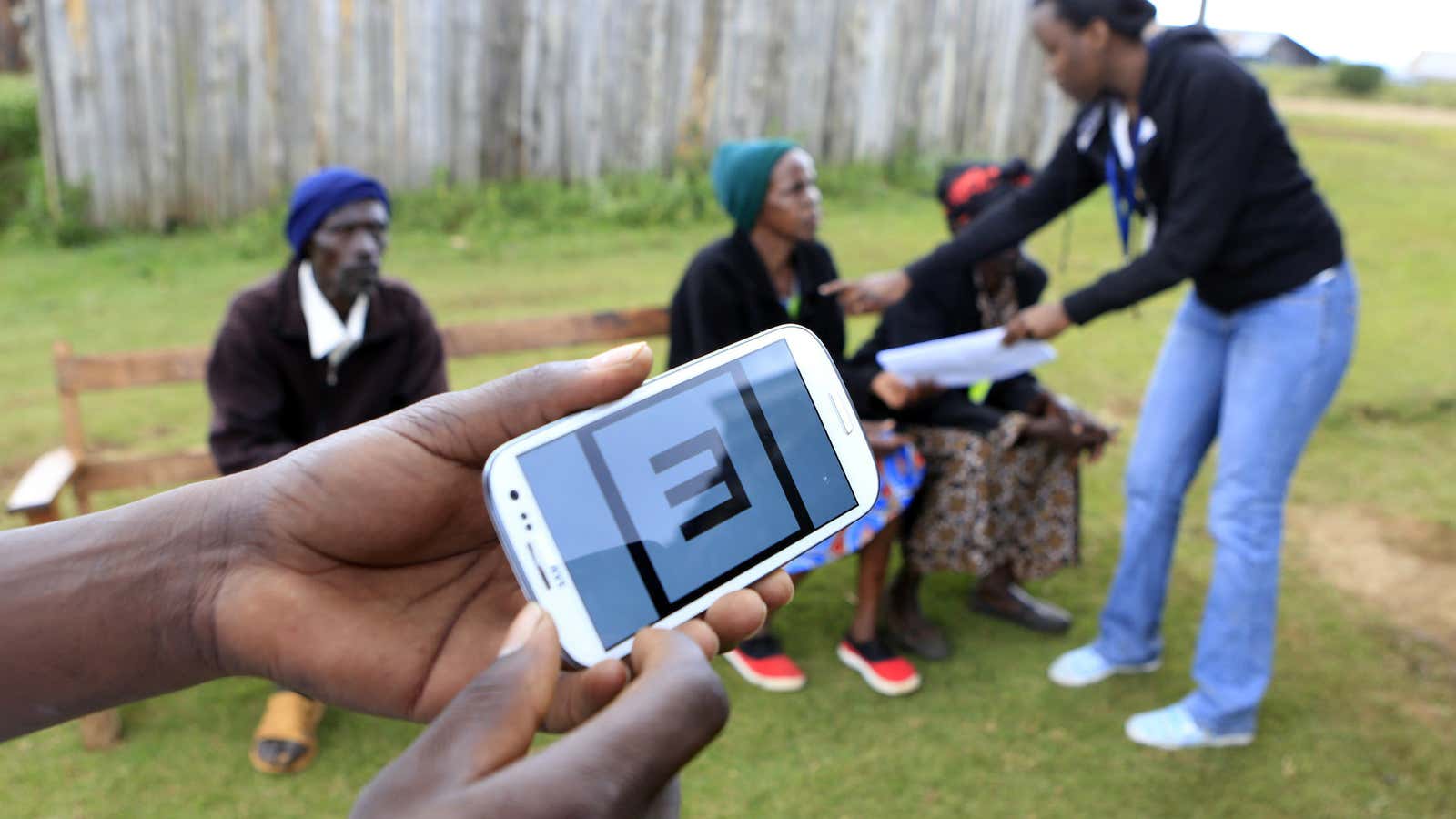A smartphone app developed in Kenya makes eye screening as easy as taking a photo. The Portable Eye Examination Kit, or Peek, is now being rolled out at schools in rural parts of the country, where vision problems are common but opticians and reliable health equipment are rare.
Trials have been completed, and the app will now be used to screen 300,000 students in Trans-Nzoia, an agricultural county in eastern Kenya, over the next three years. As much as 80% of the county’s 2.5 million people have eye problems that could lead to blindness, said Hillary Rono, an ophthalmologist in Trans-Nzoia, during a launch event for the app in Nairobi this week. Rono co-founded the company behind the app, Peek Vision, and he serves as its project leader in Kenya.
In the Peek test, the letter “E” is displayed on a phone screen in varying orientations. The patient points in the direction they see the letter facing and the test giver swipes in that direction, as National Public Radio explained in a company profile last year. If the patient can’t tell which direction the letter is facing, the phone is shaken to indicate the letters weren’t visible to the test taker.
The results are immediately available after the test. When impaired vision is detected, the school and the student’s parents will get a text message asking them to take the child to a hospital for treatment.
The app was co-developed by British ophthalmologist Andrew Bastawrous, who moved to Kenya in 2013. Peek Vision is one of many health startups building on growing smartphone usage in low-income countries. Mobile apps are being used to send patients reminders of appointments and medication dosages, as well as instructions for giving birth at home. Addressing eyesight is particularly relevant given that 90% of the world’s blind live in low-income countries.
Peek can also replace expensive, bulky equipment used for identifying other eye problems—equipment places like Trans-Nzoia can’t afford. The app works with a clip-on camera adapter to take high-quality images of a person’s retina to identify potential causes of vision loss, such as cataracts, glaucoma, or nerve disease. The attachment can be made with a 3D printer.
According to Rono, the adapter-with-app combo is 50 times cheaper than traditional eye-testing equipment, and can be operated by community members rather than just health workers. And so far it’s proven just as effective.
A study based on 300 adults in central Kenya published last year in the journal JAMA Ophthalmology found Peek’s vision test app was as accurate as a paper chart exam (or electronic methods) used at a health clinic. Another study in the journal, released in February, found “no observable difference” between the quality of images taken with Peek’s equipment than that of a digital retinal camera used by an ophthalmic assistant.
